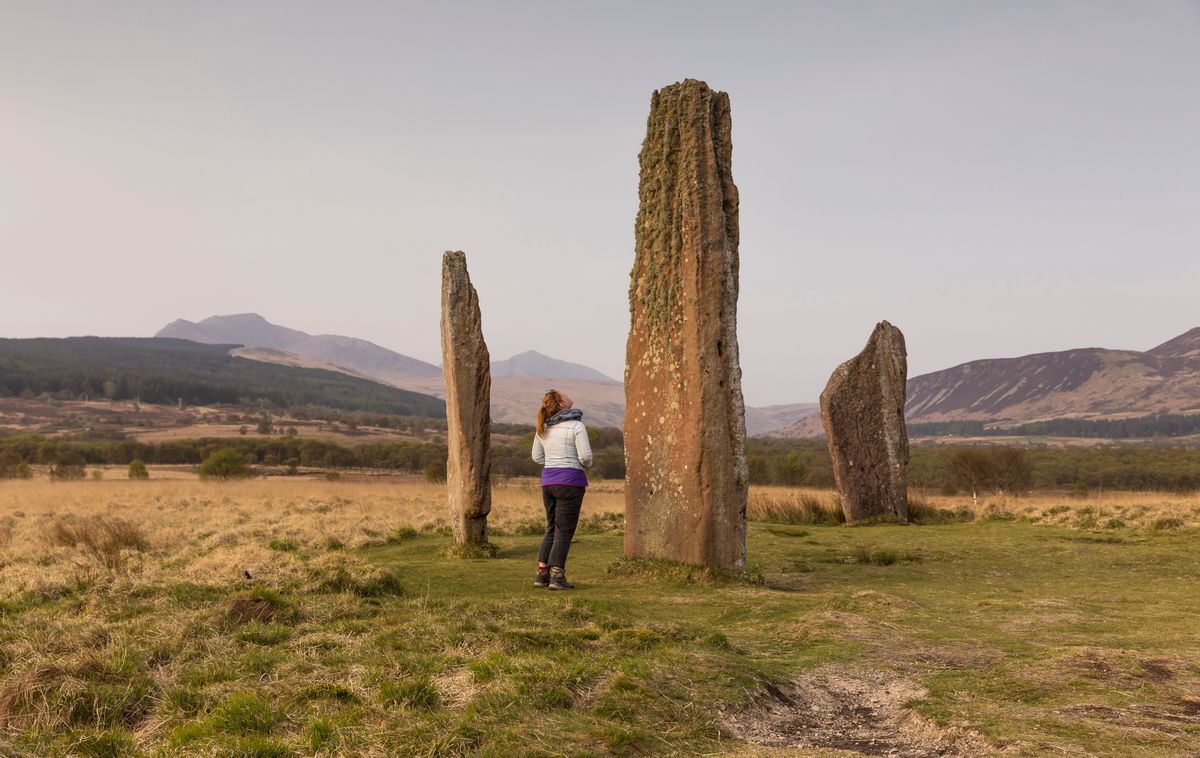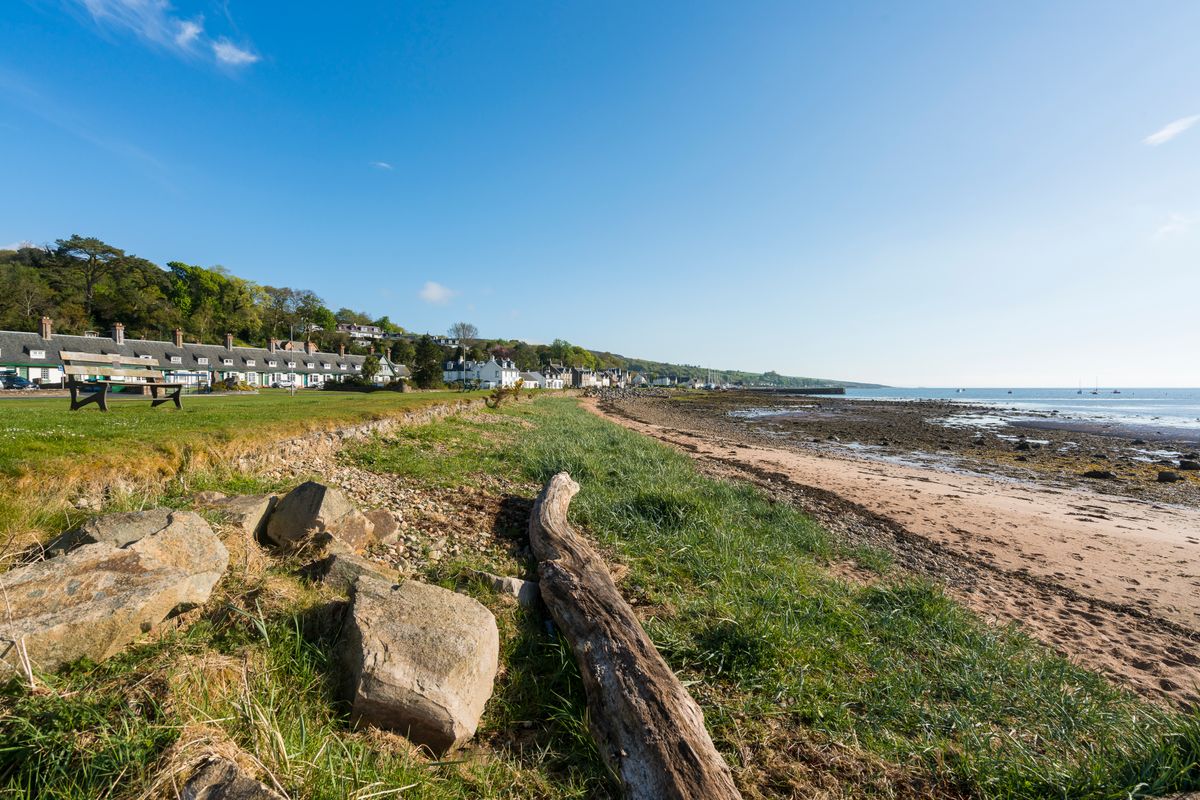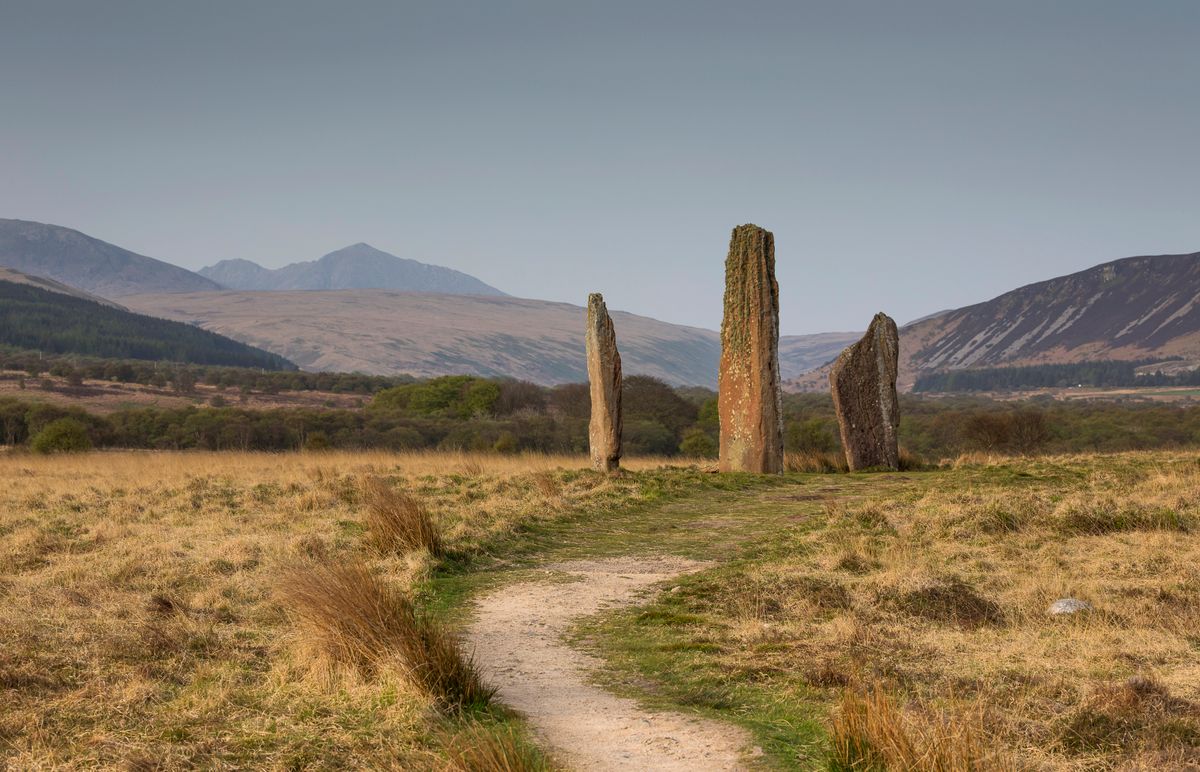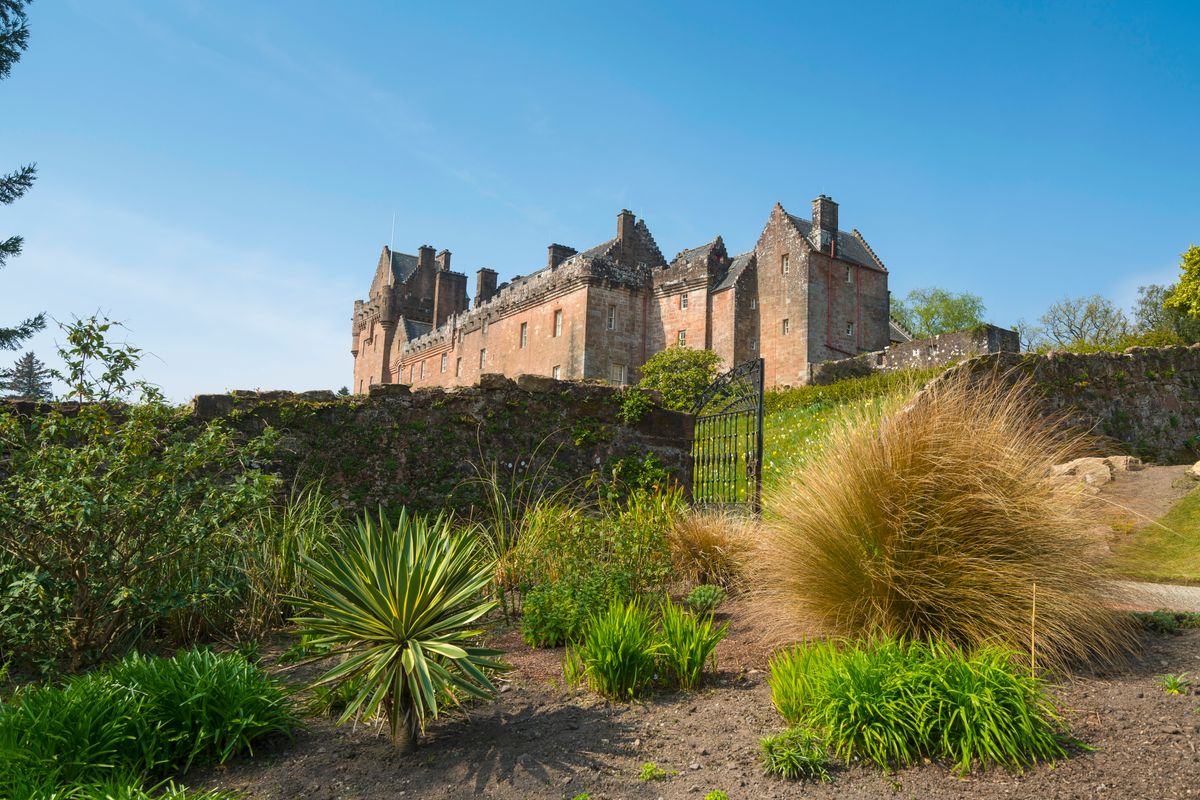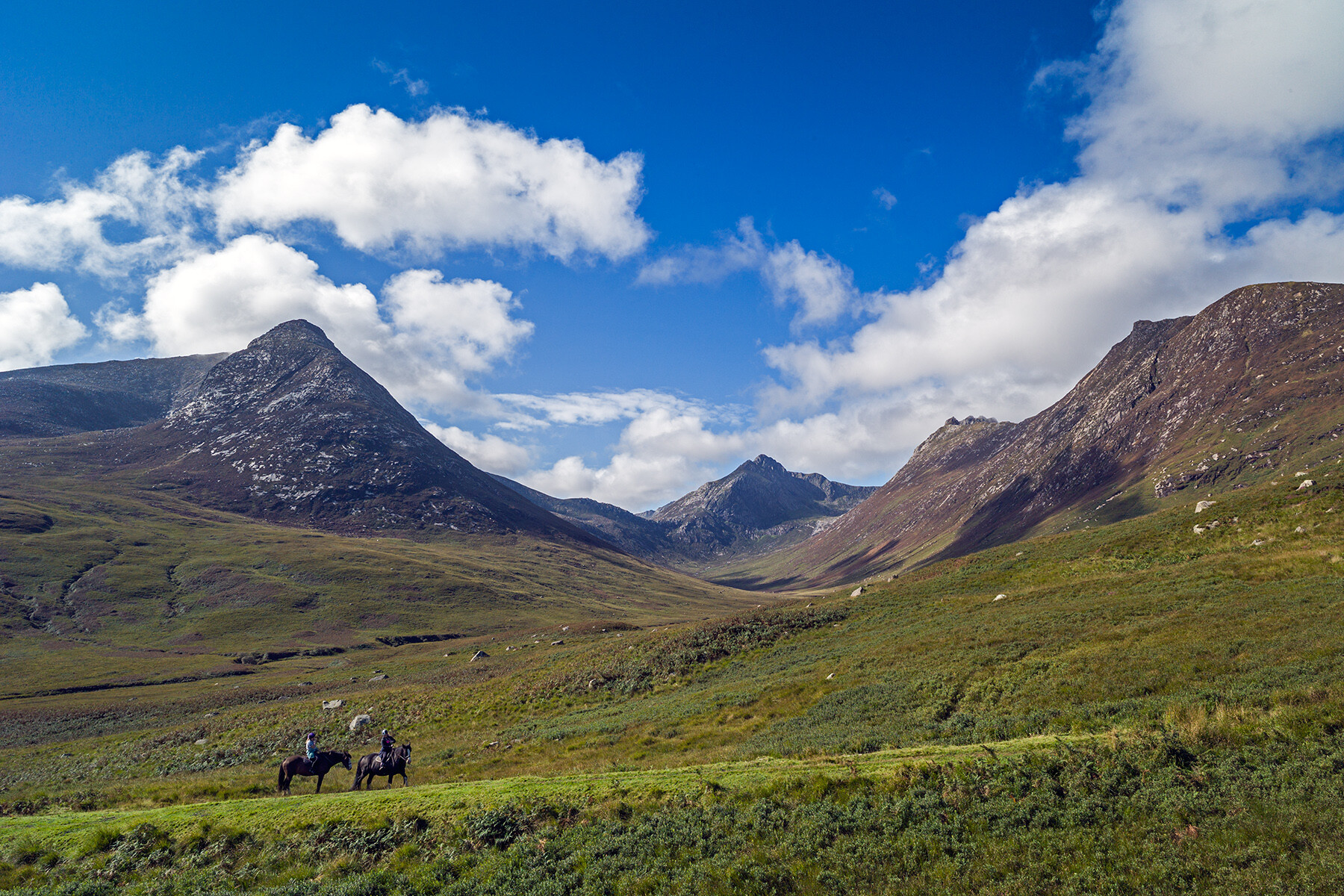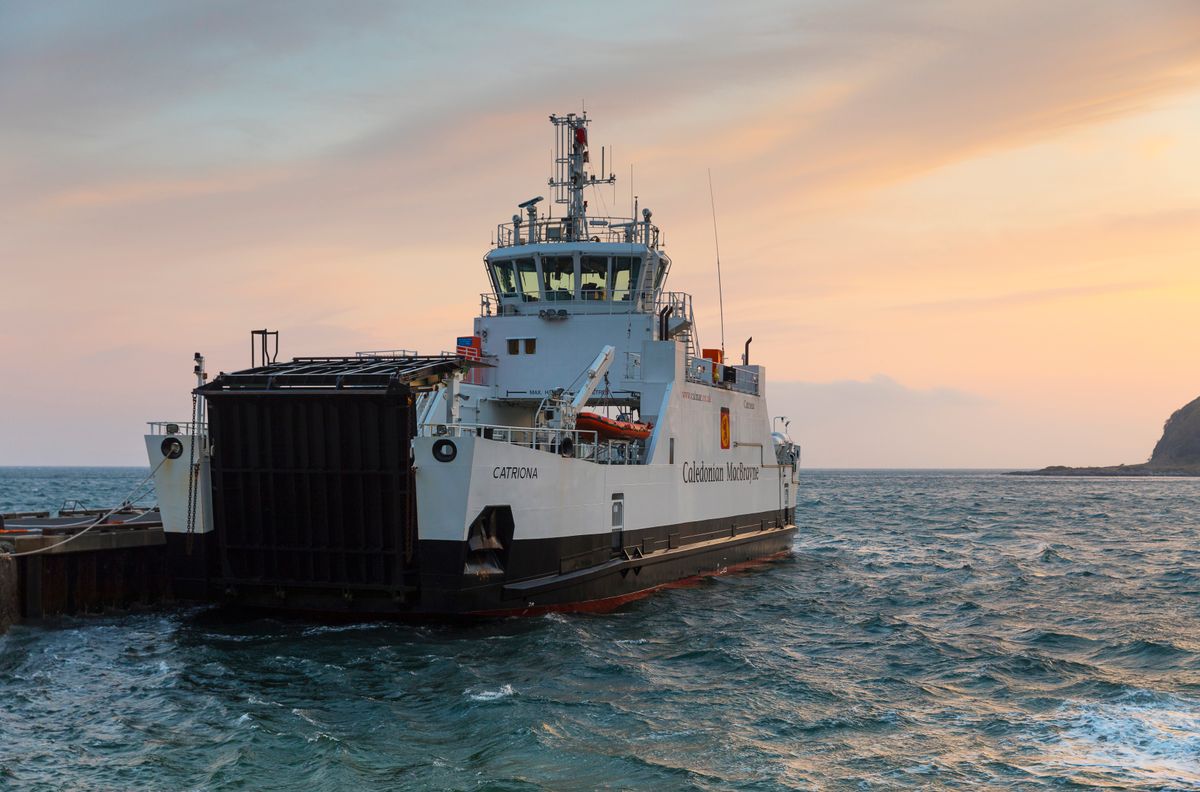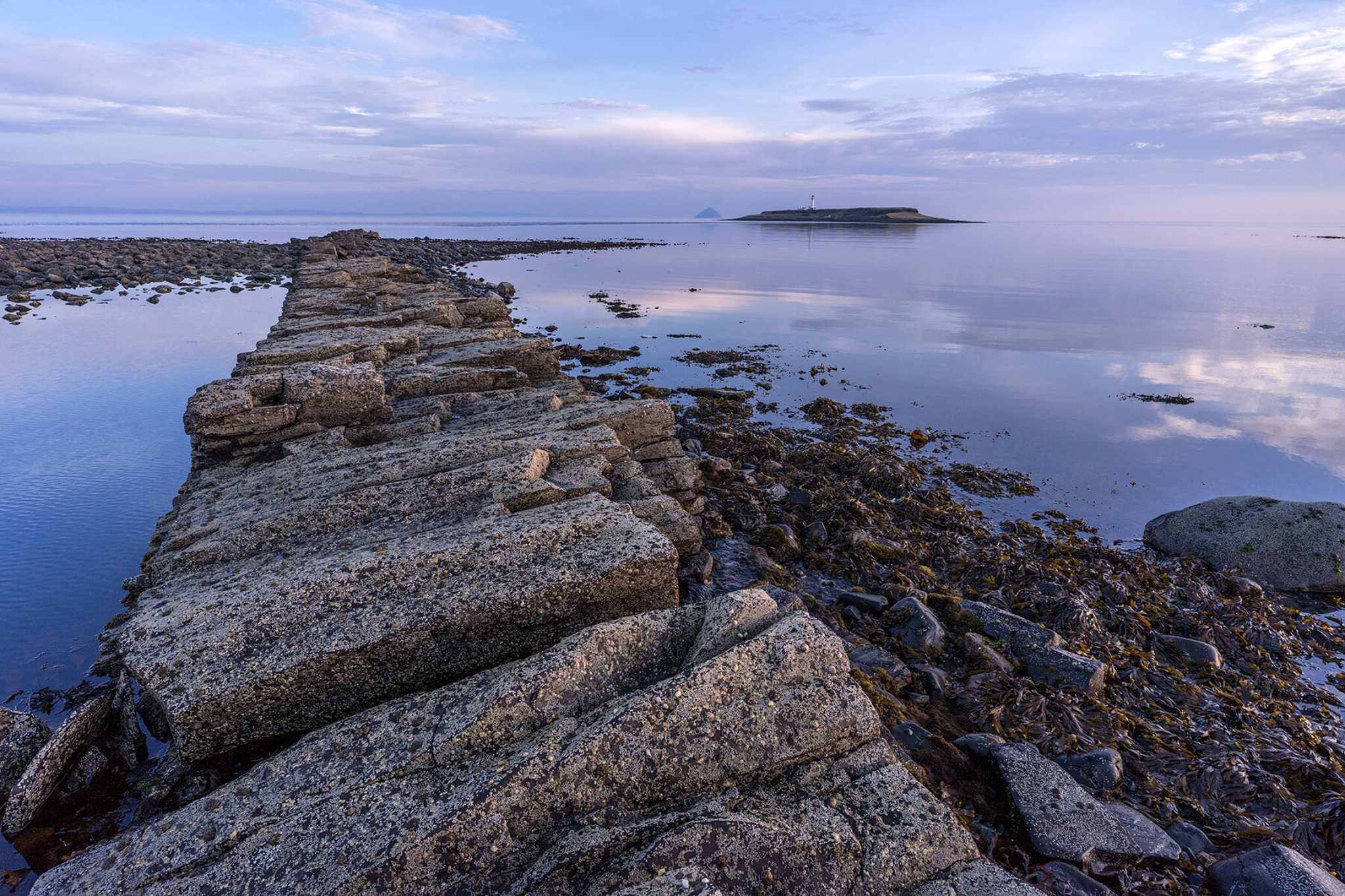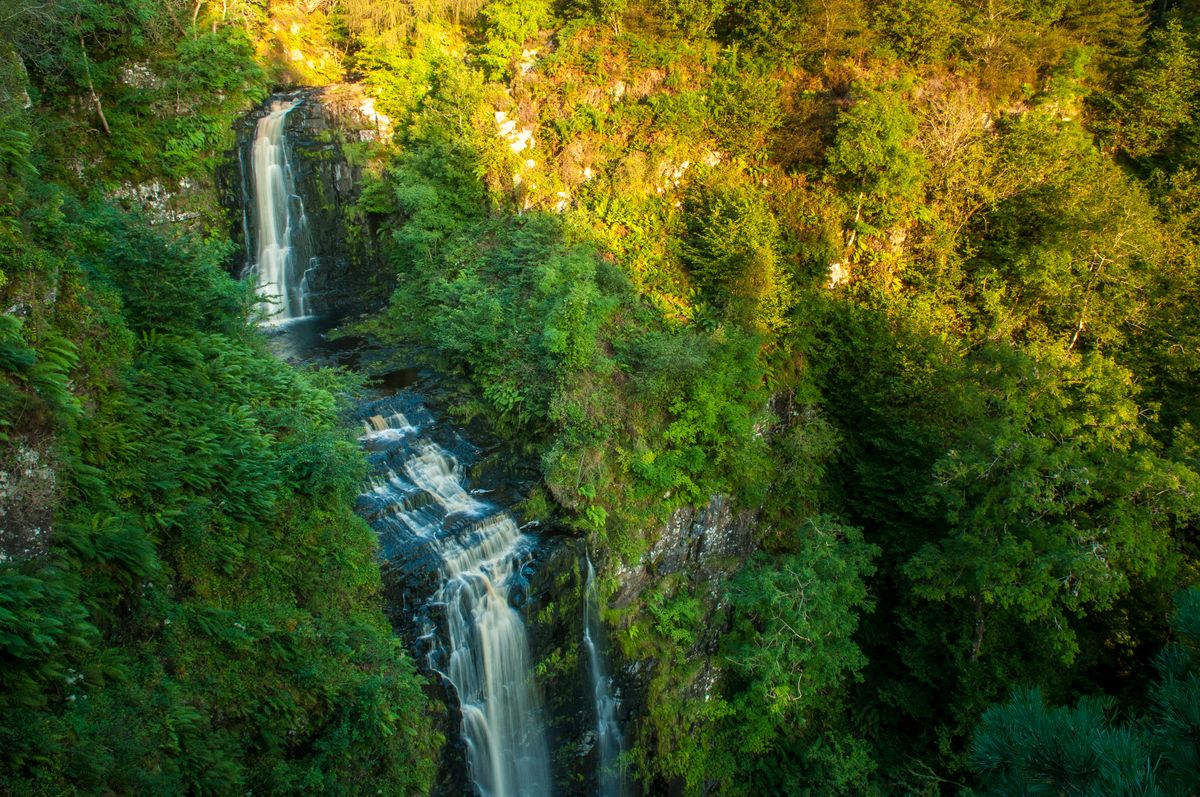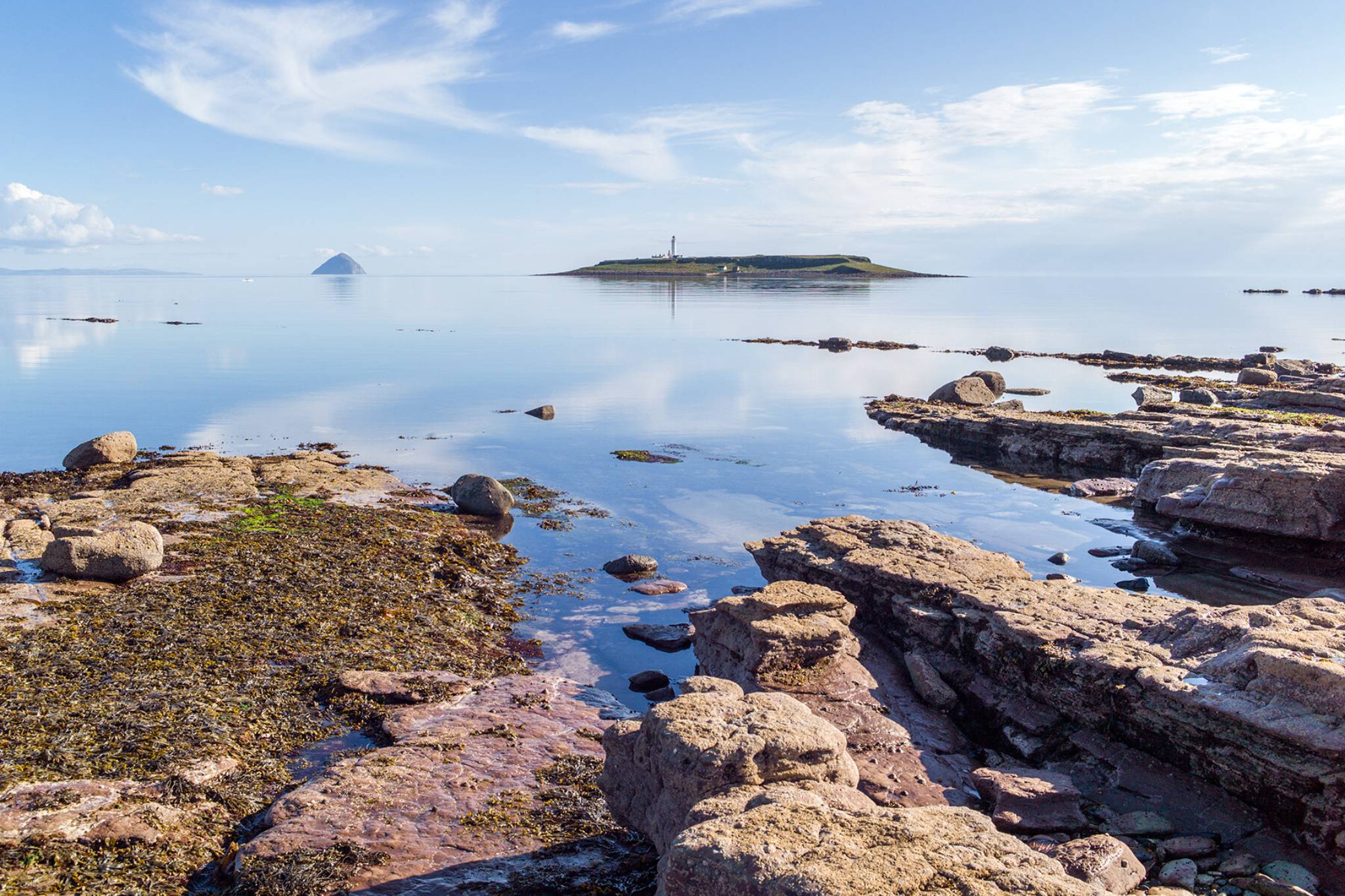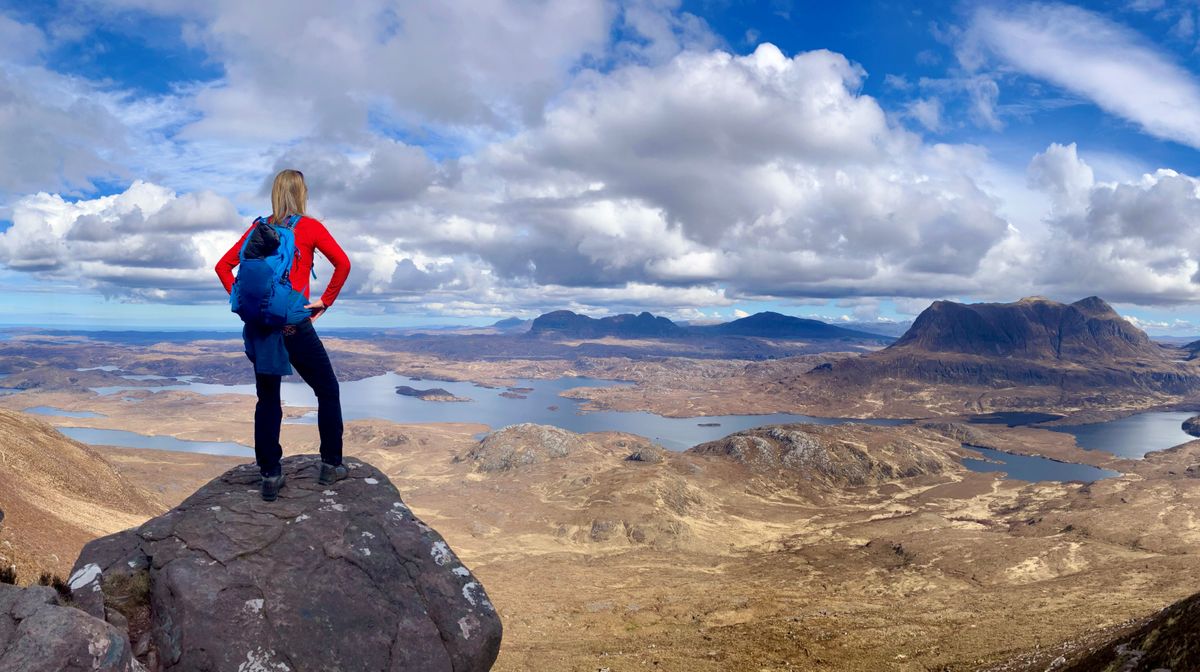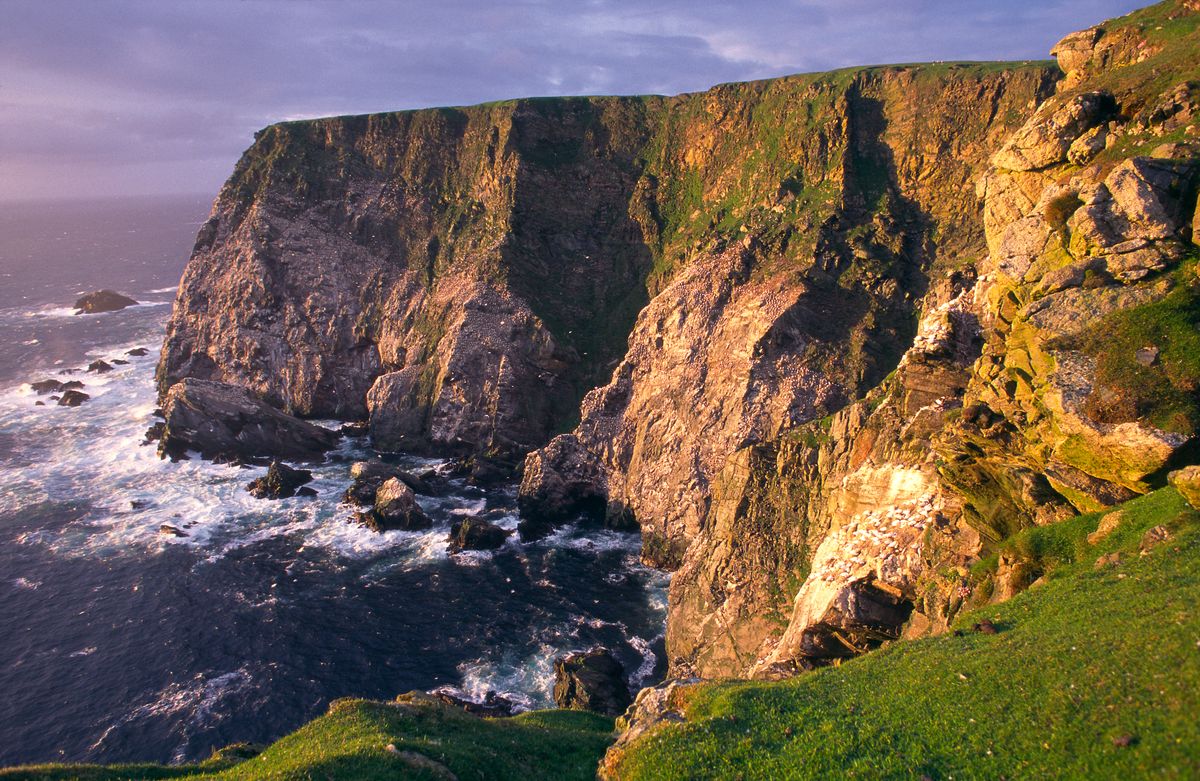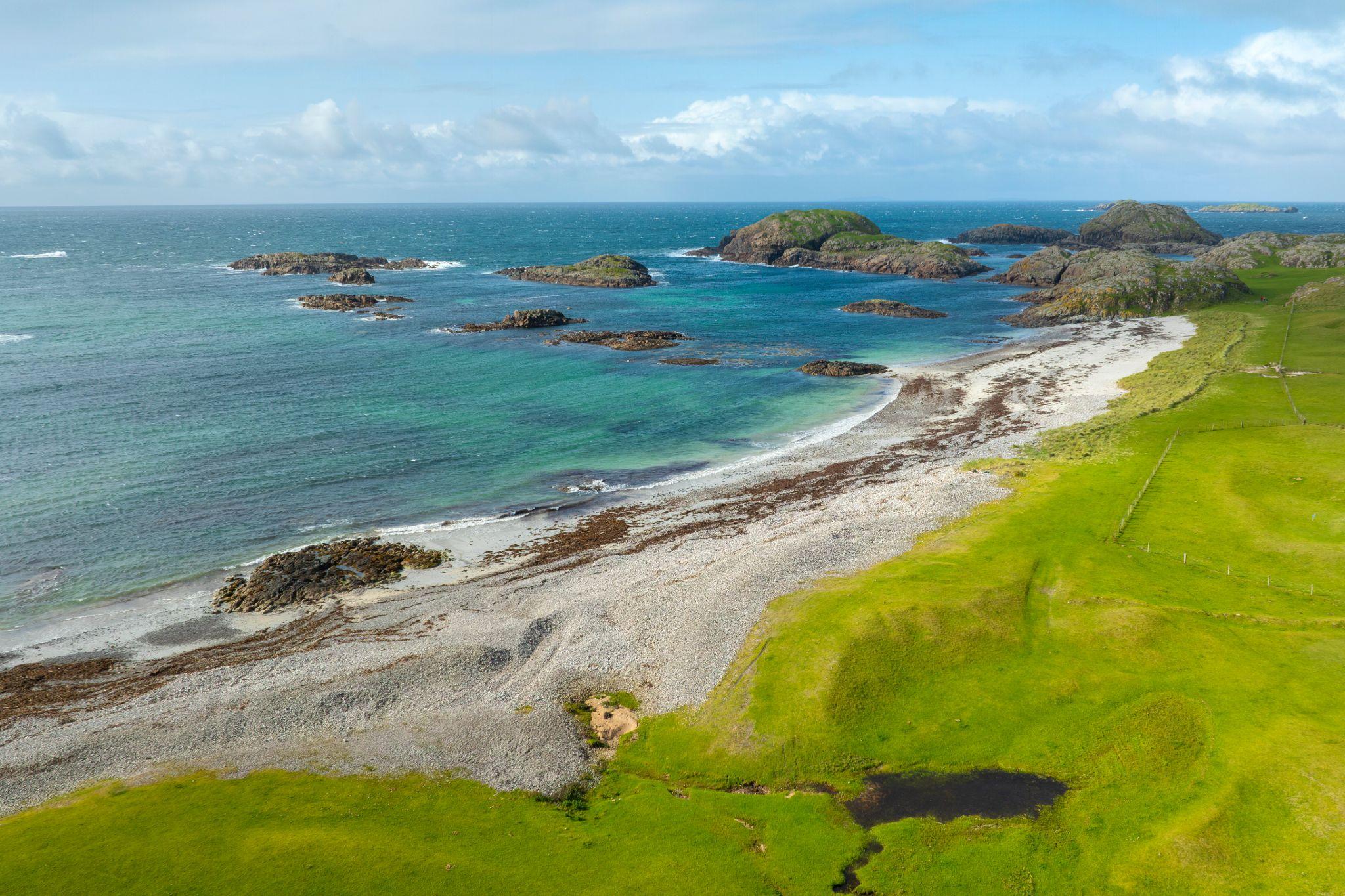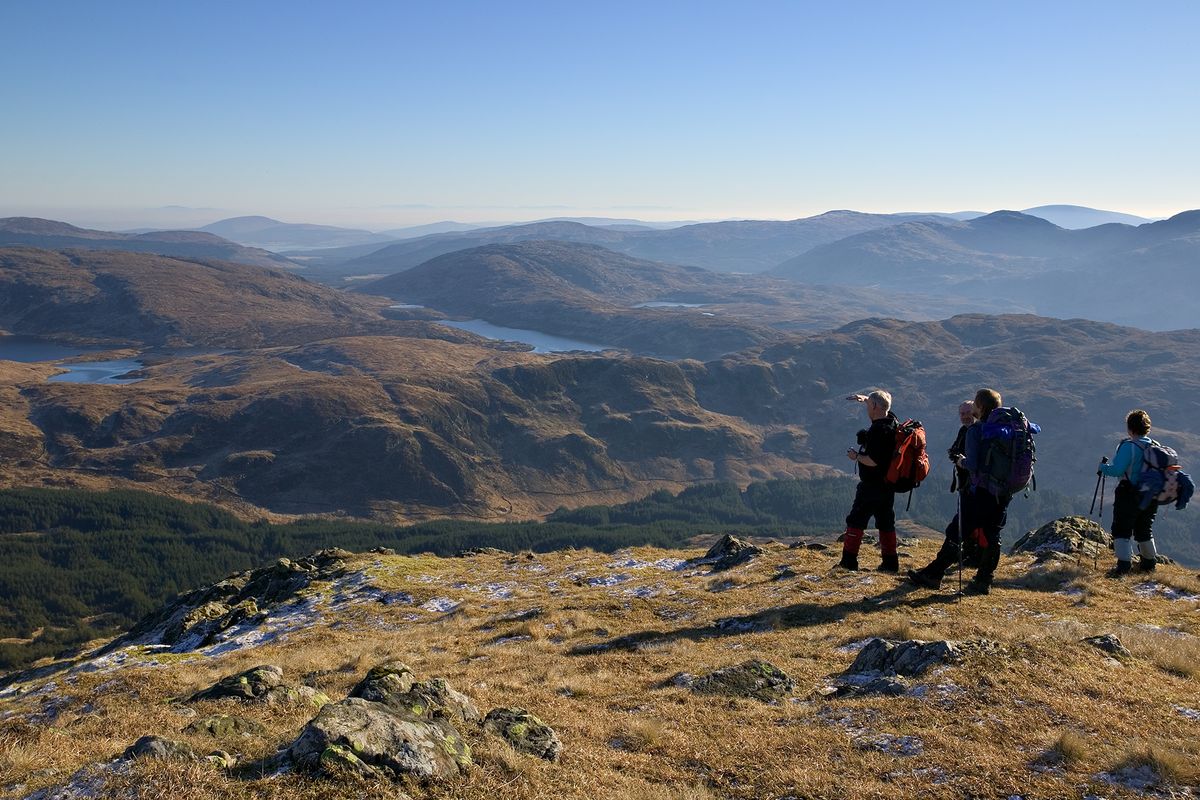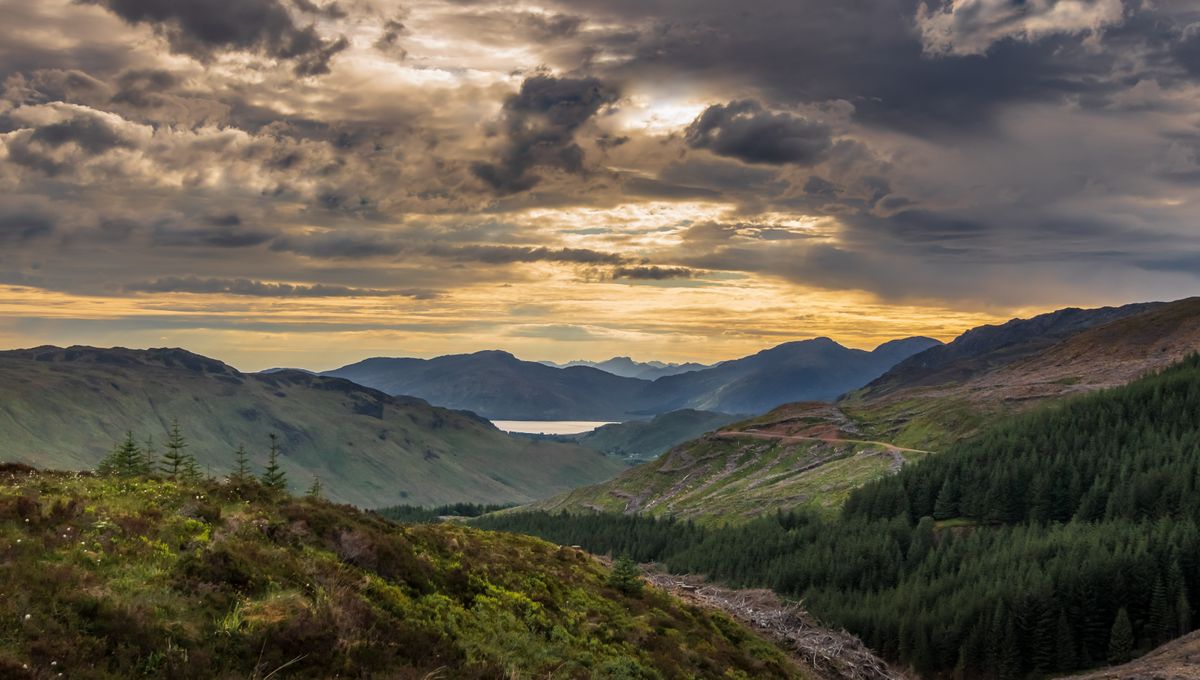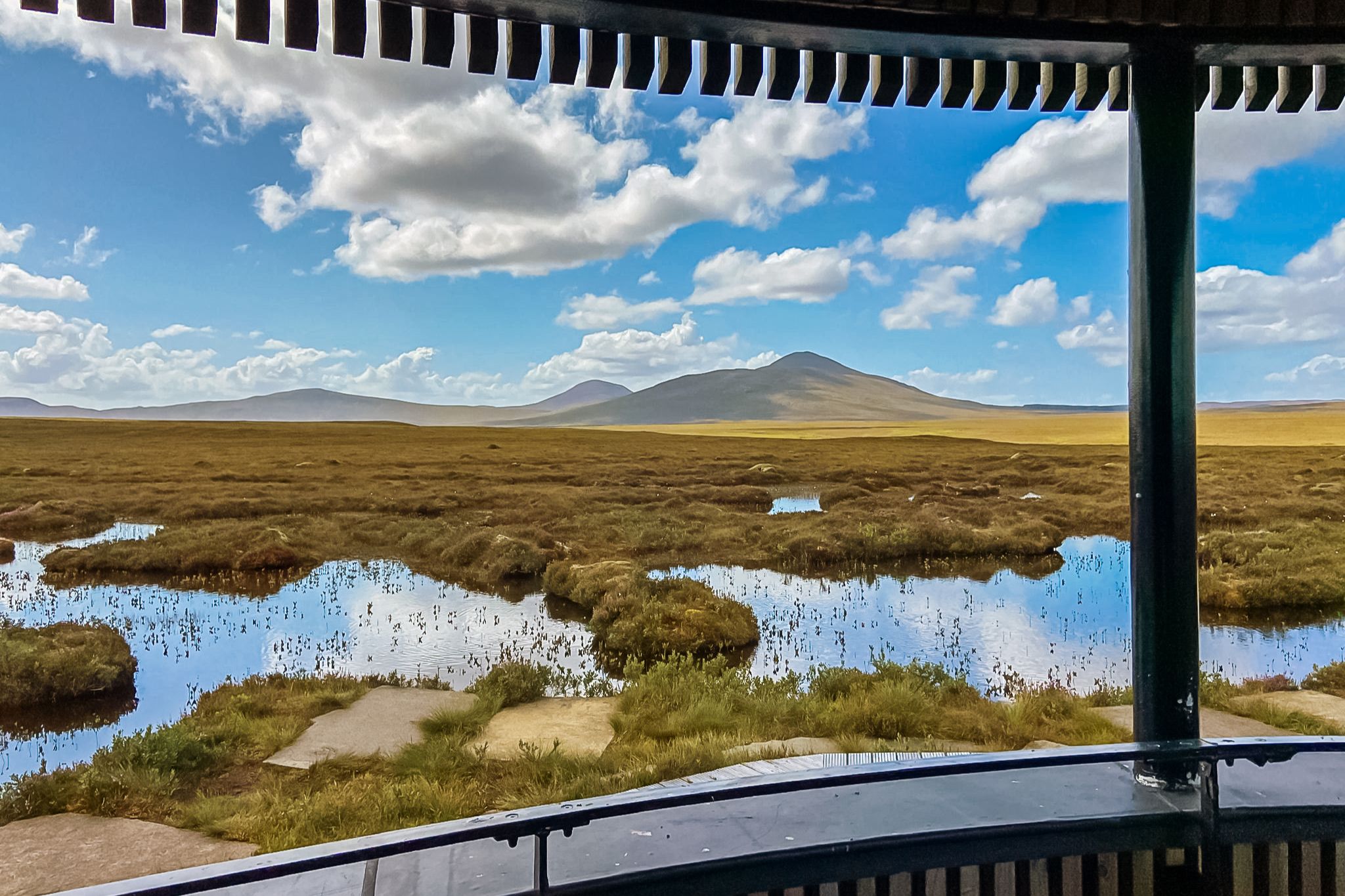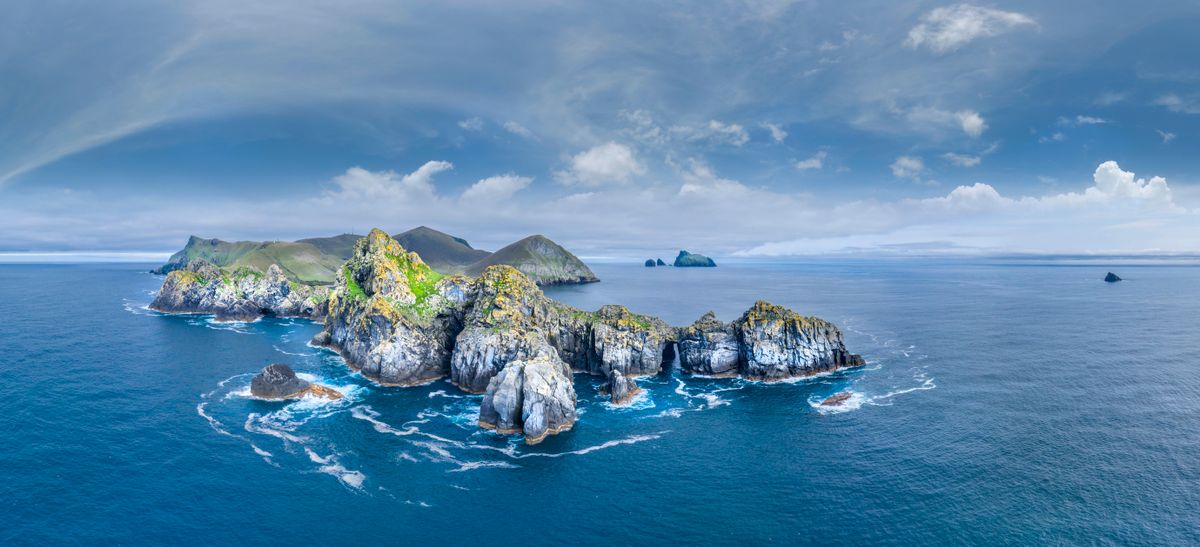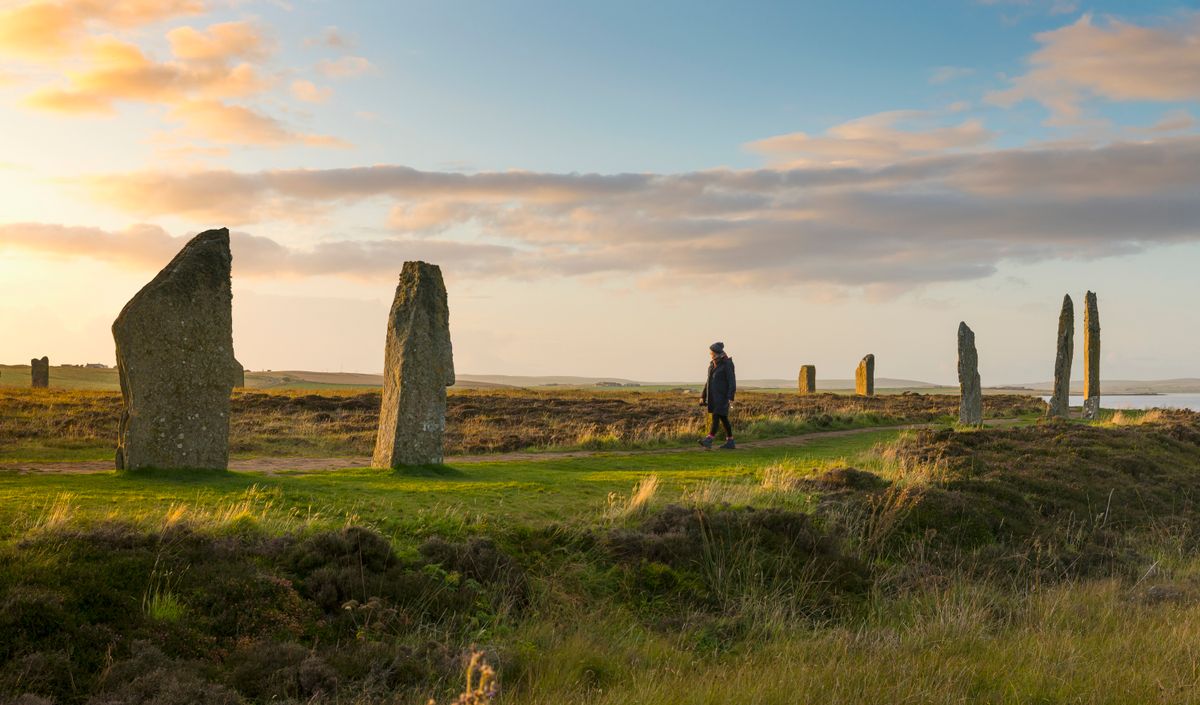The pools at Glen Rosa with a view of Goat Fell, Isle of Arran
© Barry Dawson / Ayrshire & Arran Tourism Group
Arran's geodiveristy is jaw-dropping. In fact, it's composed of rocks from nearly all geological periods of the last 600 million years. On this compact island explore dramatic folded rock formations, ancient magma dykes, and Hutton’s Unconformity - a world-famous feature that helped shape modern geology.
You can also marvel at fossilised fulgurite (formed when lightning strikes rock) and proto-crocodile footprints preserved in sandstone. Budding archaeologists won’t be disappointed either, with ancient standing stones, Neolithic monuments, and a concentration of megalithic tombs to explore.
The island is also renowned for its native wildlife - red deer, eagles, adders, otters, and seals are often spotted. Arran is home to three unique tree species: the Arran Whitebeam, the Arran service-tree, and the Catacol Whitebeam. These rare trees are found only on Arran in remote mountain gorges.
Home to one of the largest maerl beds in Scotland, a coralline pink seaweed, you can also learn more about the ‘Marine Protected Area’ covering the south of the island, as well as Scotland’s first ‘No Take Zone’, a campaign created by locals, where no fish or shellfish can be taken from the area.
